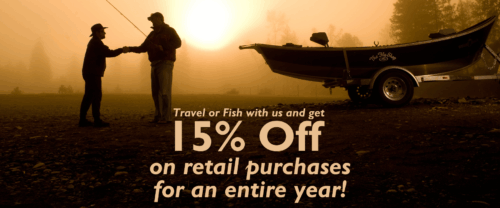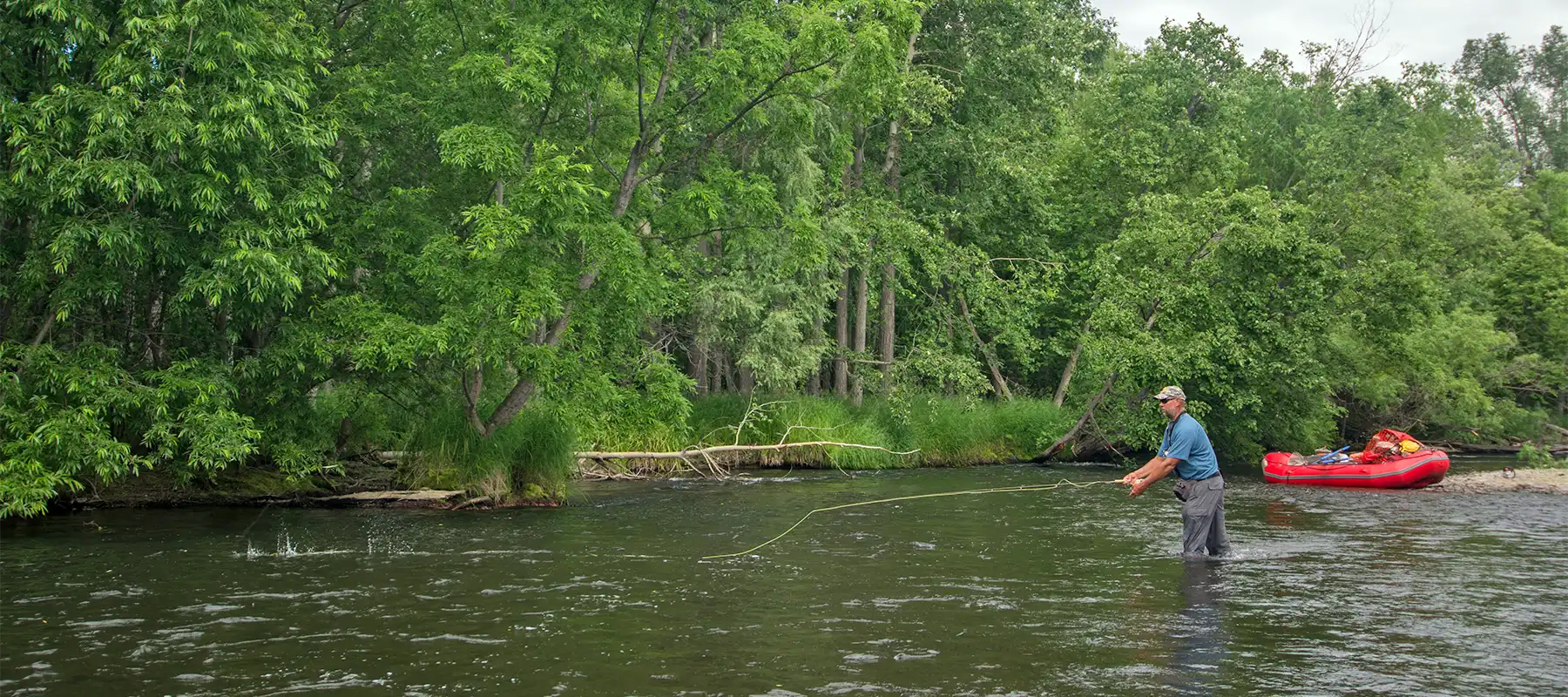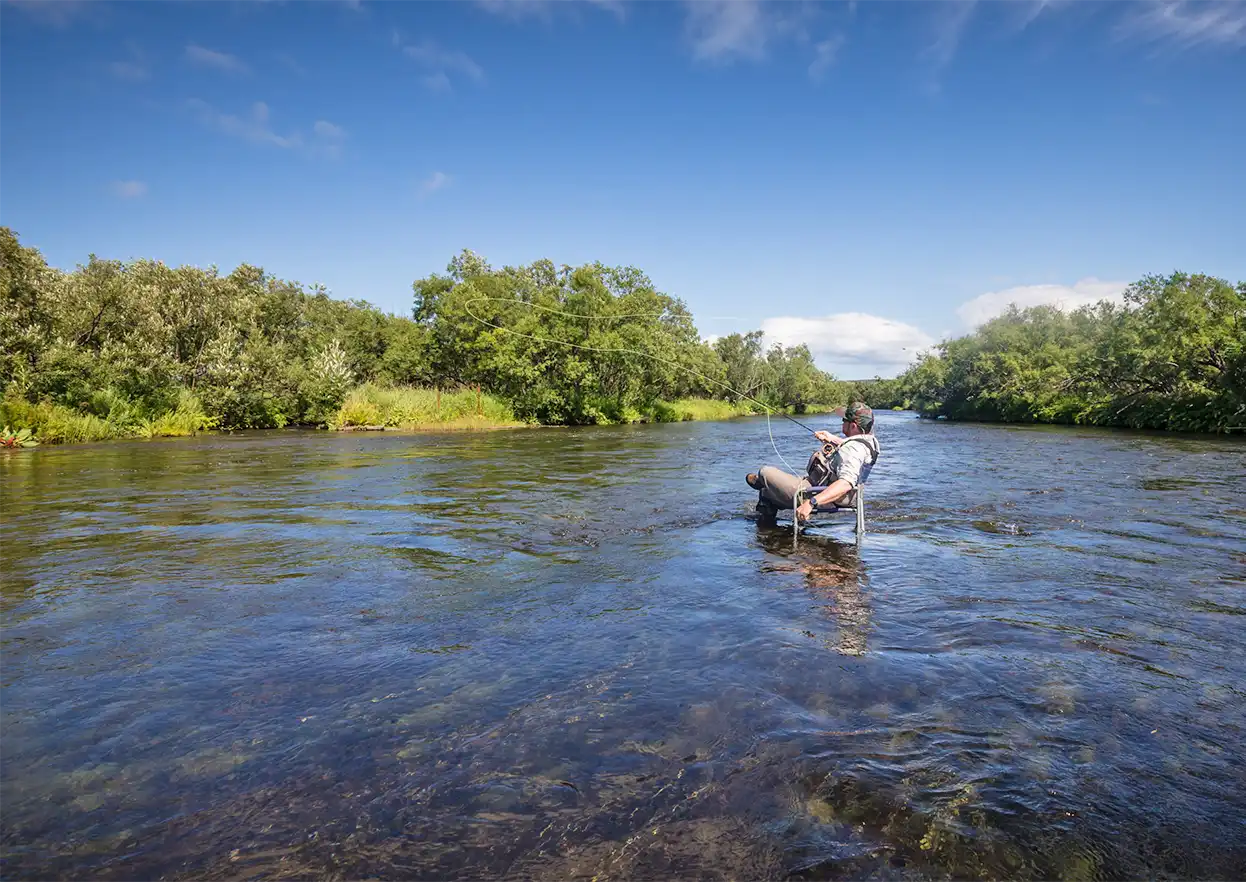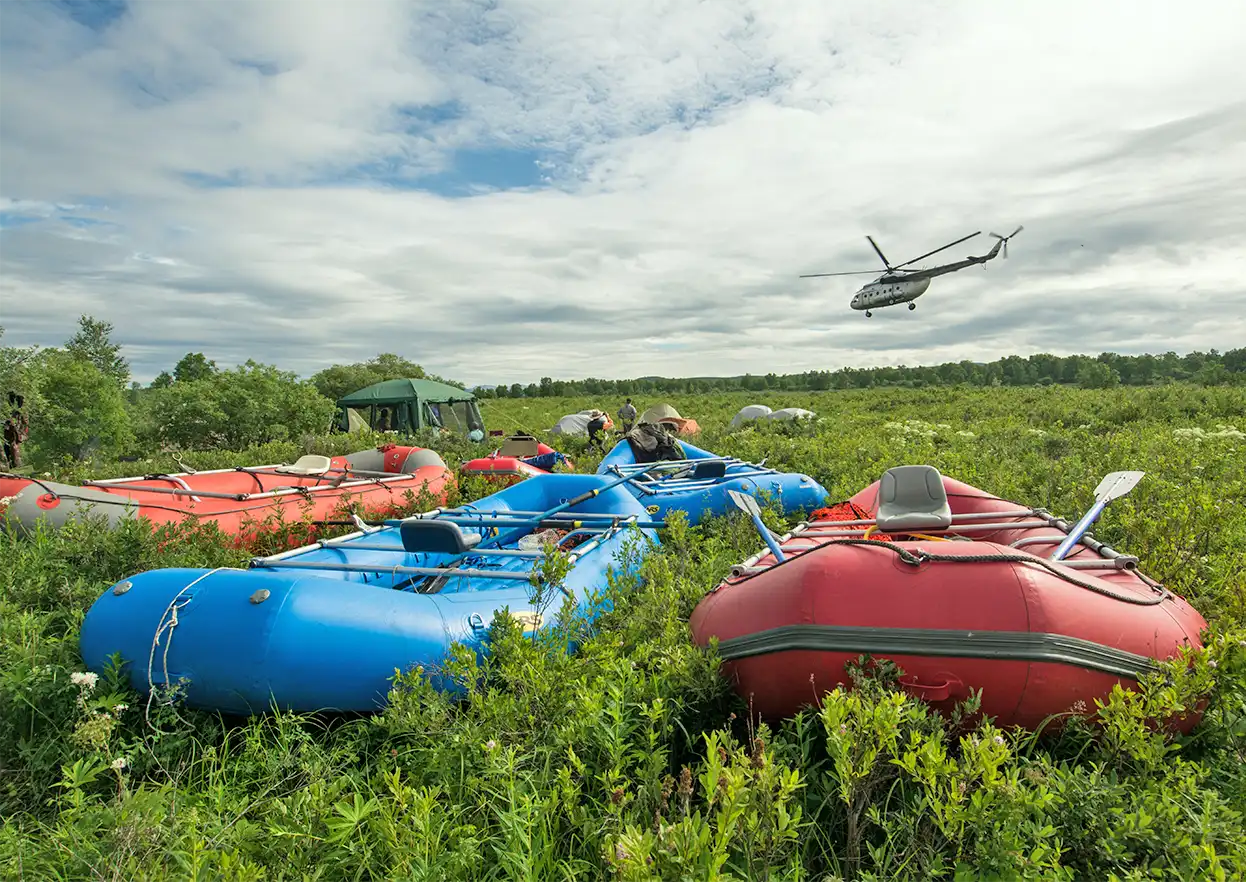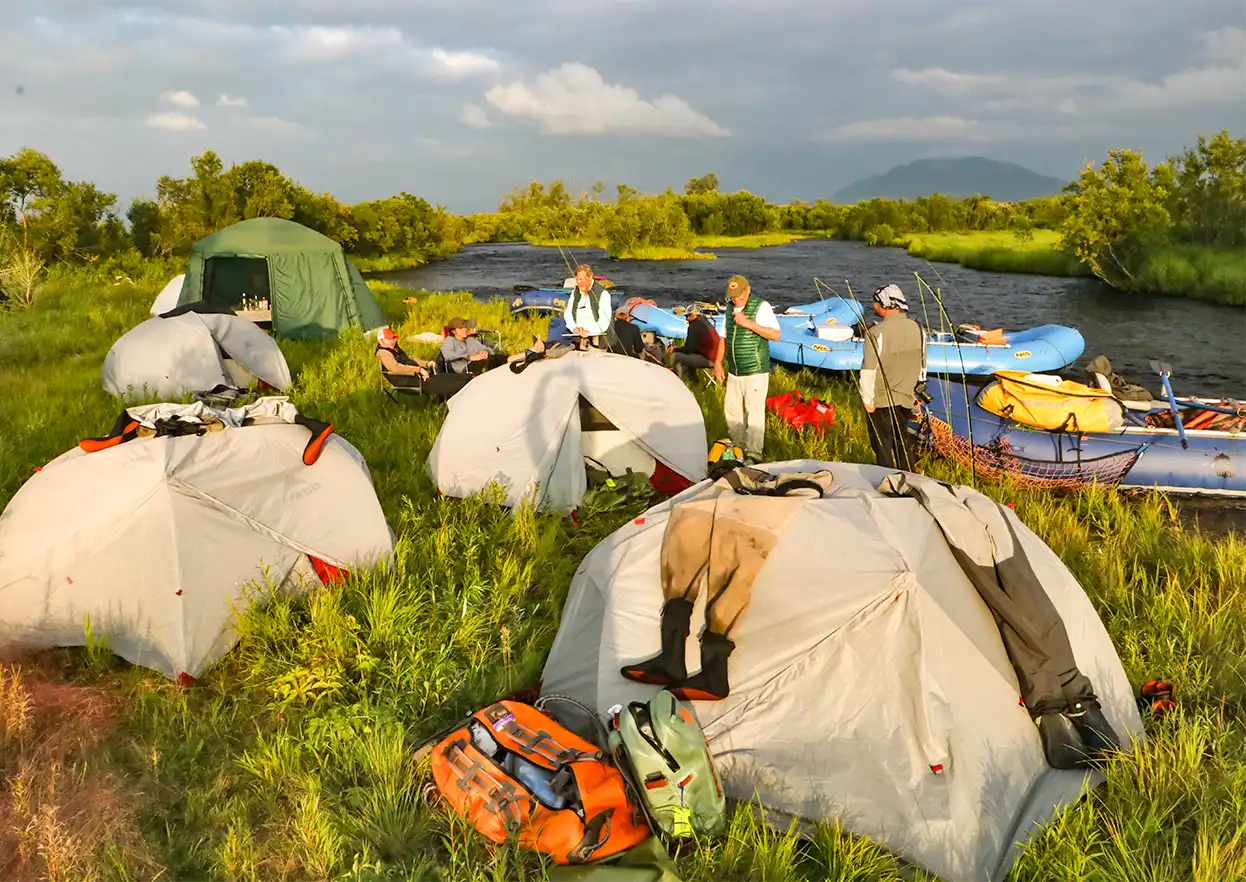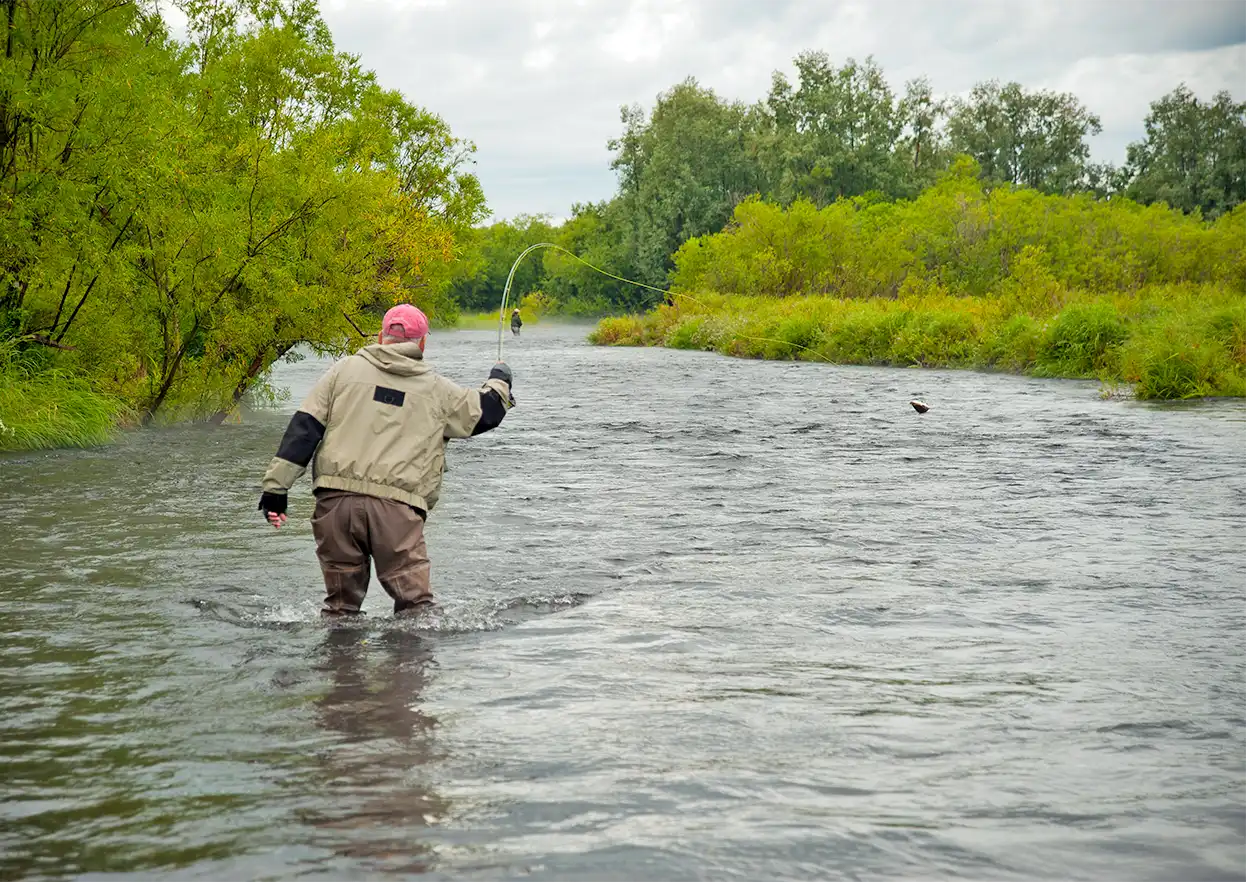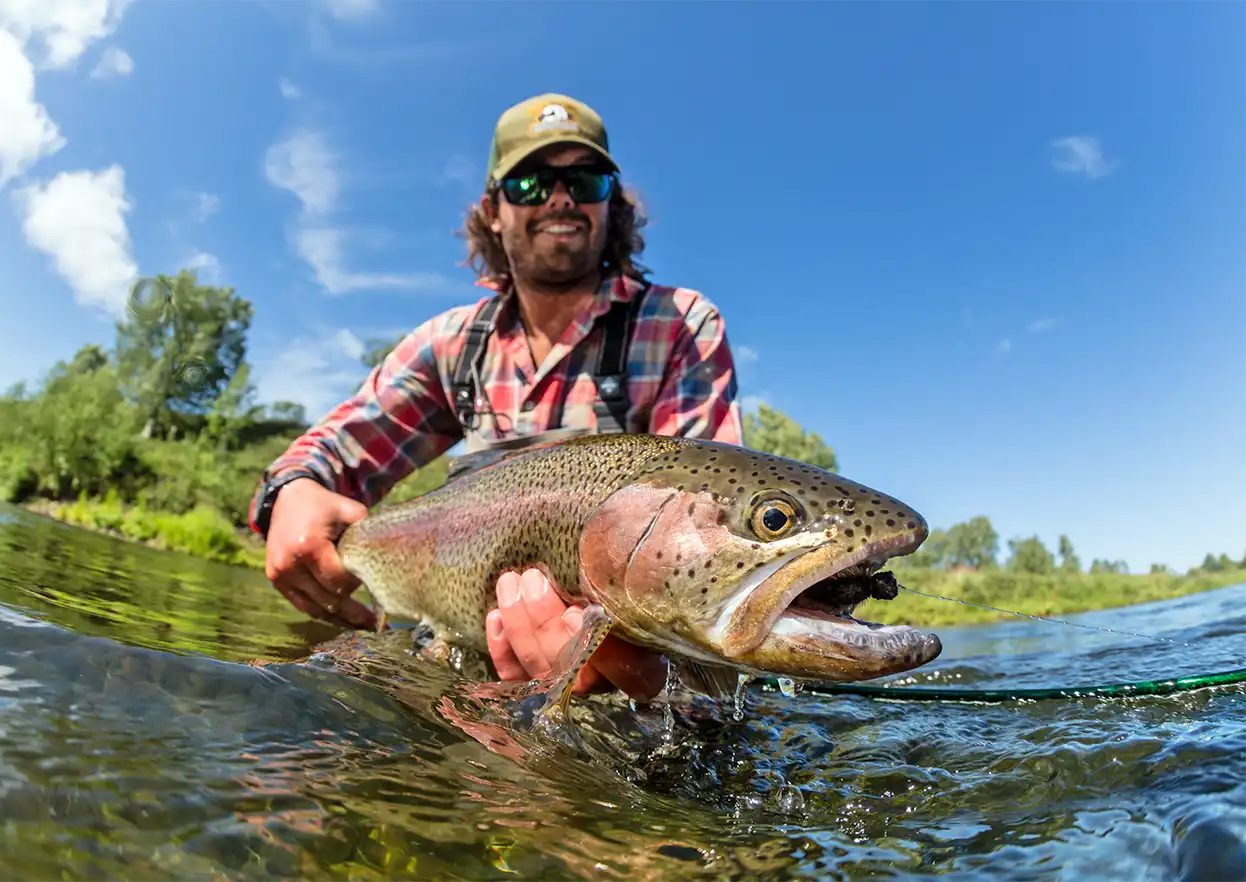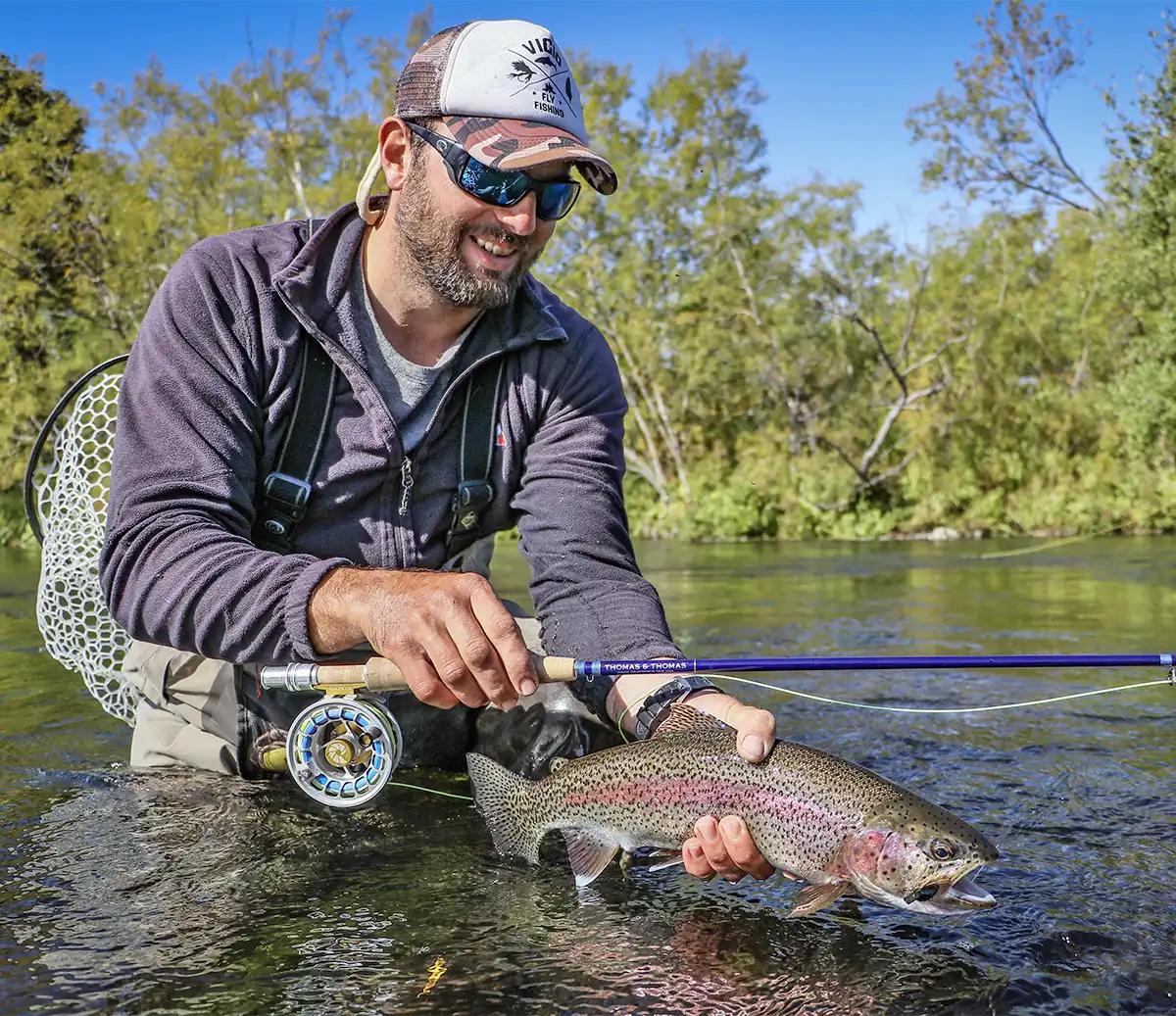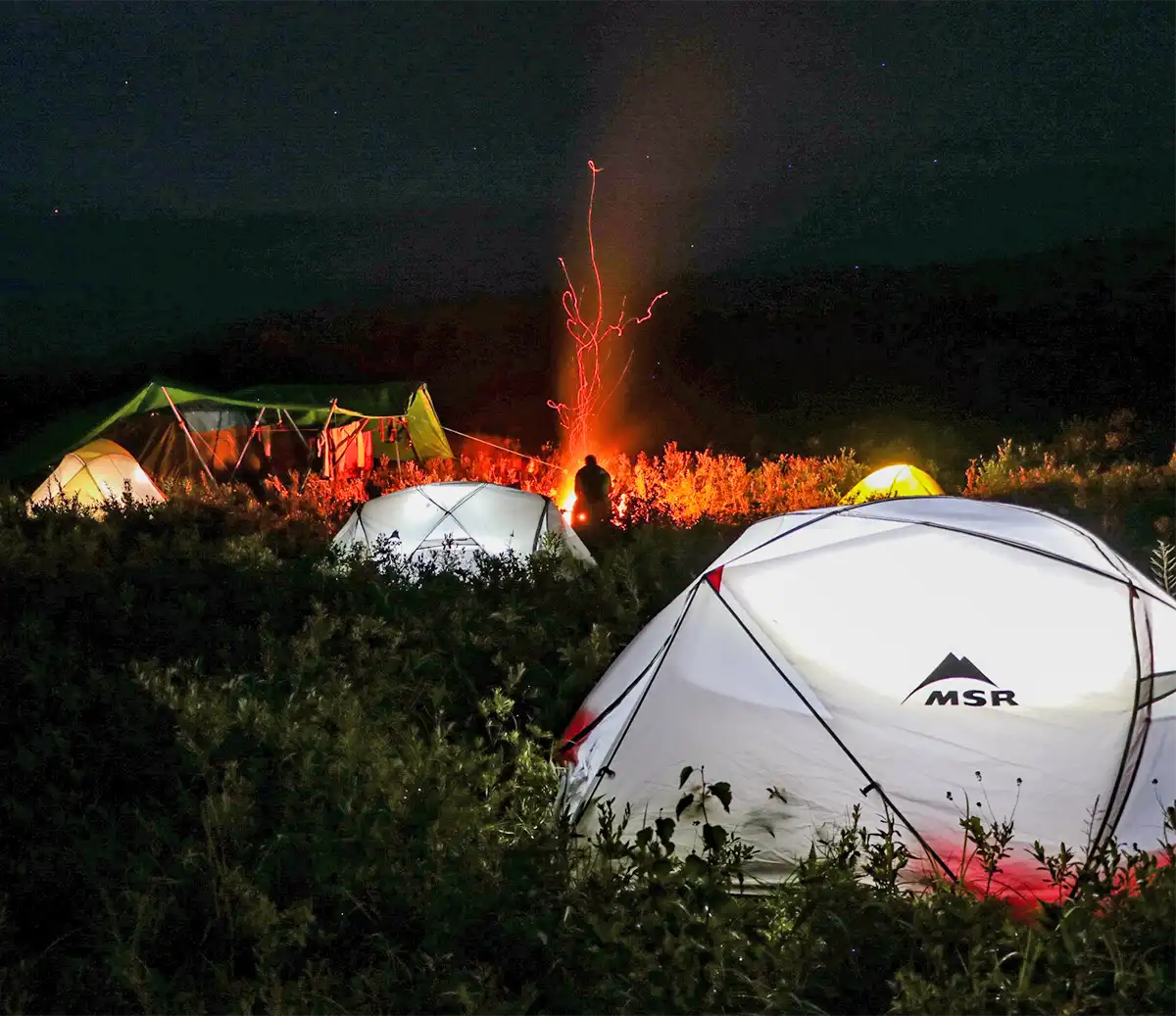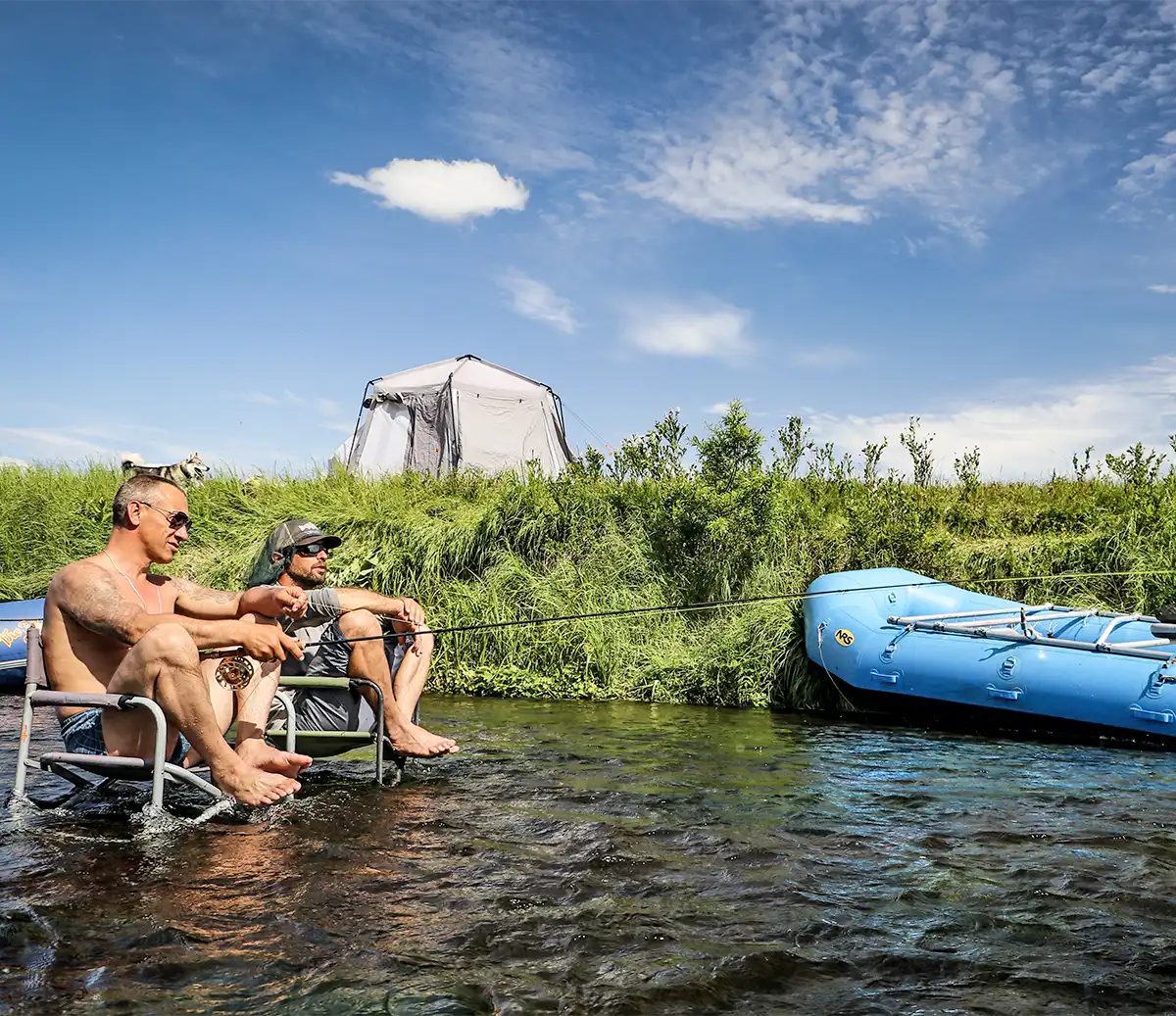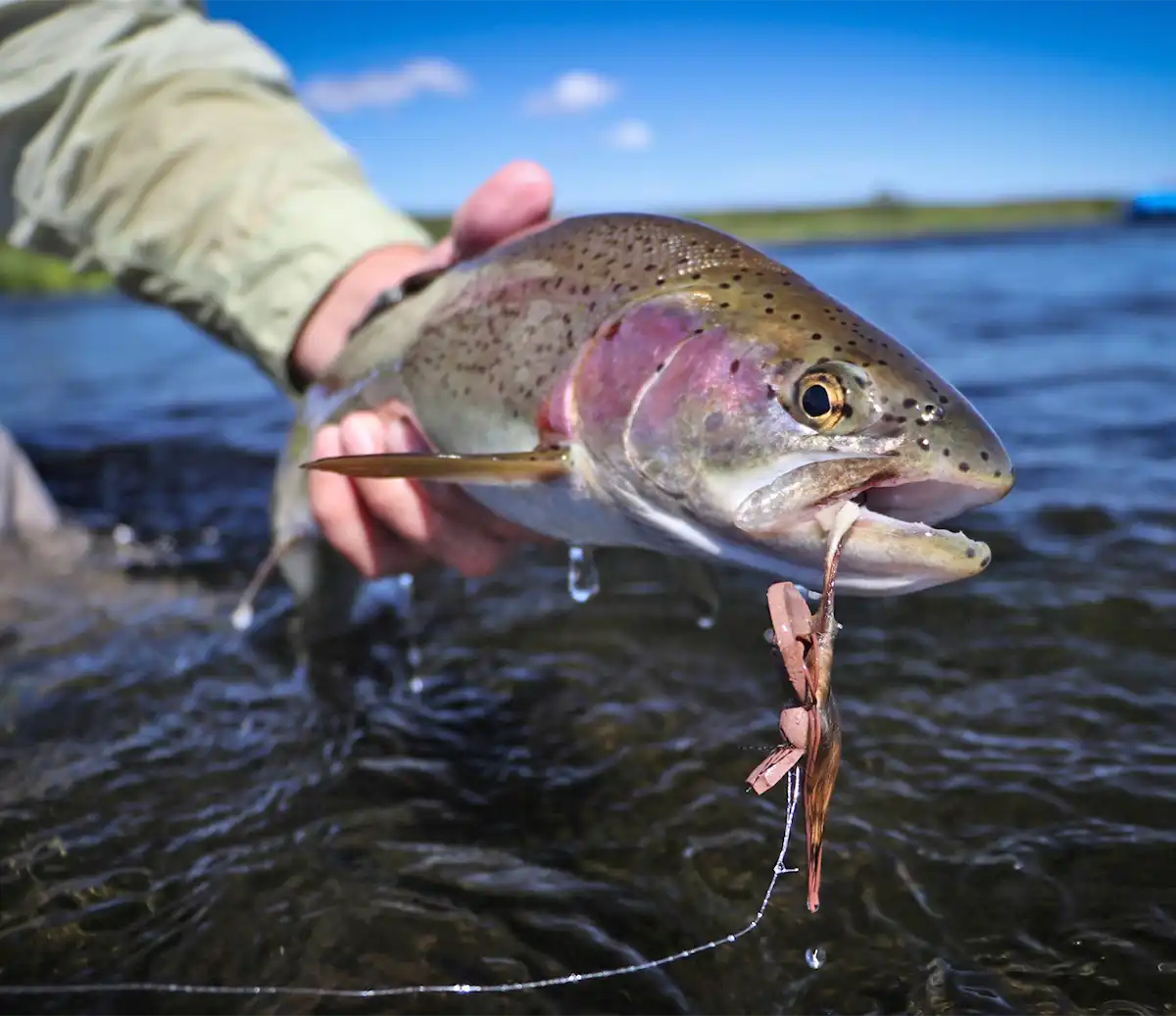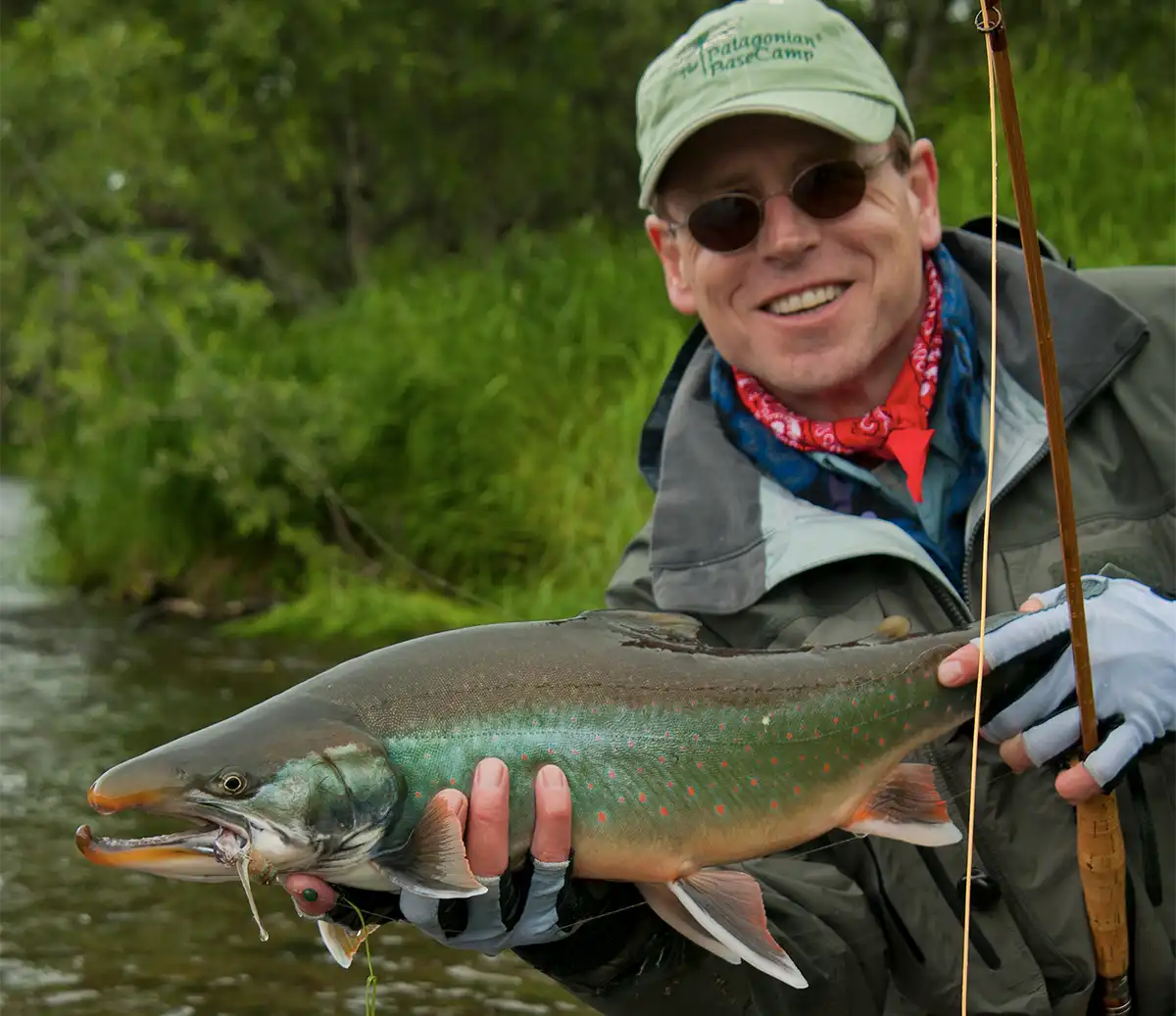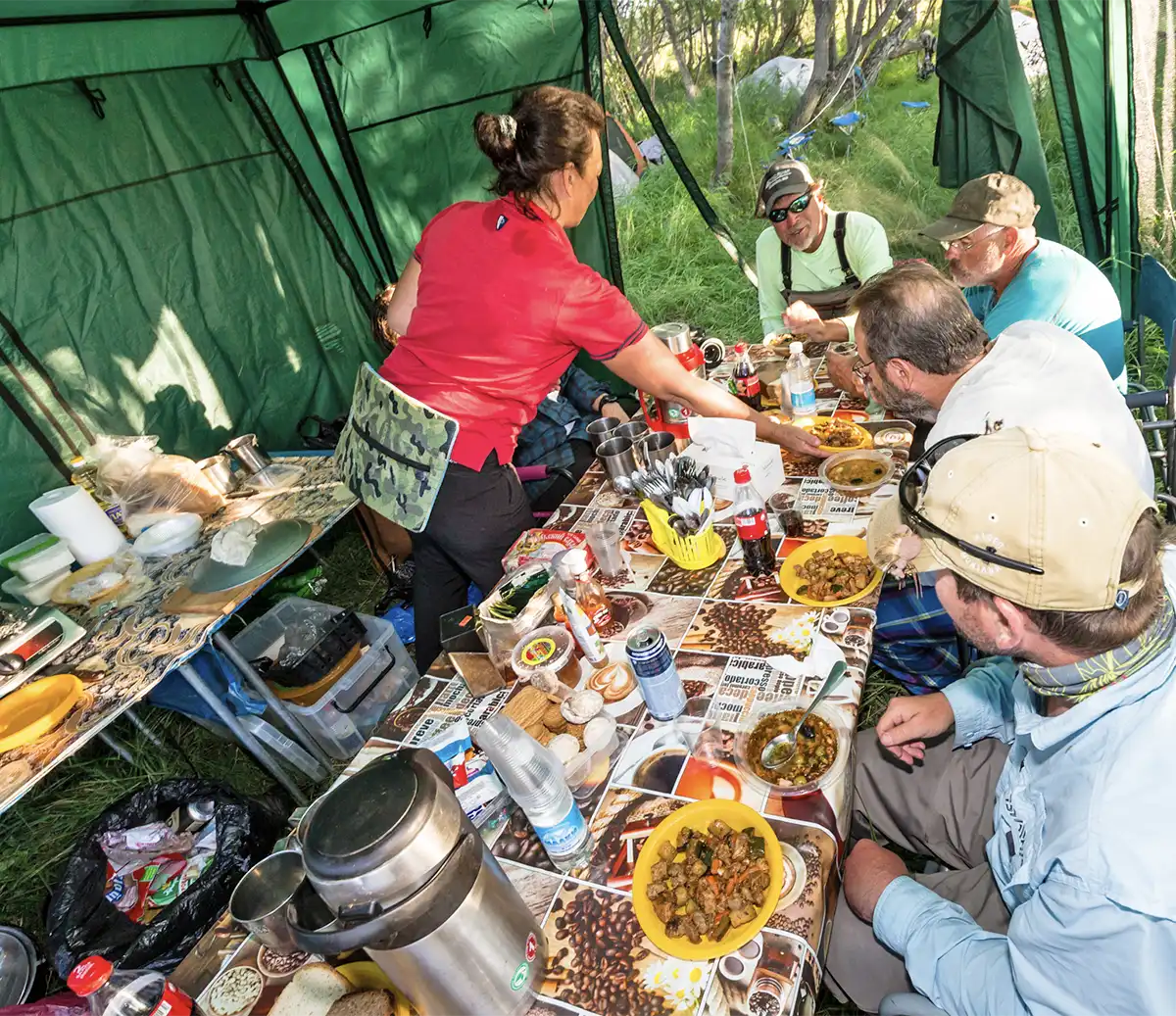There are a couple different ways to get to Kamchatka, depending on the season.
Via Moscow or Seoul: There is a daily flight from Moscow that arrives at 10:00 am to Petropavlovsk, as well as a daily flight from Vladivostok (via Seoul) that arrives at 8:40 am. It may be possible to arrive the same day of your scheduled departure to the river, AS LONG AS YOU ARRIVE NO LATER THAN 10:00 AM.
However, we strongly recommend arriving a day early. This allows a chance to acclimate to the time change, so you’re not a vegetable when you arrive to the river. It also allows for any possible lost luggage or airline delays. If you miss the helicopter departure into camp, you will either miss your entire week of fishing or have to charter a very expensive extra helicopter flight into camp!
If you do plan on arriving a day early (recommended), please let us know as soon as you make your flight reservations so that we can work with our local partners in Kamchatka to arrange overnight lodging for you.
For overnights in Petropavlovsk, guests will typically be housed at one of our cozy guest houses in Yelisovo, or the Art Hotel near the airport. Nightly lodging fees (not included in your fishing package), range from $60-$100; guests are typically accommodated in double occupancy, but pending availability single rooms can sometimes be arranged by special request. The Fly Shop will make the reservations for you, and you will be able to settle up upon arrival.
Transfer to Camp:
All guests heading into the float will be met in the morning by Anatoly or Daria at your place of lodging (they will communicate the time with you the night before), or at the airport if you are arriving that morning. They will ask to see your Russian Immigration card (provided on the flight over) to register you with the government (mandatory for all visitors). This will only take a moment. If you have not sent the $100 Fishing License fee or a scanned copy of your passport to The Fly Shop in advance of the trip, they will also request these items upon arrival.
The first few hours in Kamchatka are always an exercise in patience. Understand that this is Russia, and communication from the helicopter companies is often lackluster at best. Keep in mind that the outfitters want you to get into camp as much as you do, and they are often at the whim of the helicopter companies. Everyone’s priority is to get you into camp safely, and as quickly as possible given the weather conditions.
Mornings in Petropavlovsk are frequently foggy, and the helicopters cannot fly until the fog clears. If the weather is clear in the morning, you will head straight to the heliport. If it is foggy but the forecast is for the weather to clear, the ground crew will find a way to kill some time while waiting for weather clearance from the helicopter companies. They may take you to a nearby store, partly to pass the time and partly so you can purchase souvenirs or booze/wine/snacks for your week in camp. They may also take you to the nearby Old Castle Restaurant, which has very good food (and local draft beer). Lunch and/or drinks at the restaurant are not included in the package price, but typically range from $20-$30. They do not accept US dollars, but one of the Kamchatka Trophy Hunts staff will be on hand to help trade dollars for Rubles.
As soon as the fog lifts and the pilots give weather clearance, you will board the bus for the 30 minute drive to the heliport on the outskirts of Yelisovo. If the weather looks like it will stay fogged in near Petropavlovsk for most or all the day, the best option to get you into camp may be a long bus ride (6.5 hours) north up the peninsula to the town of Esso, where there is another heliport closer to the river. There is only one mountain pass between Esso and the northern rivers, so often if you cannot fly from PK because of the weather you may be able to get out to camp by flying from Esso instead. It’s all part of the adventure of Kamchatka, and our outfitters will do everything they can to get you into camp and fishing as soon as possible!
In very rare circumstances, the weather can be so bad that the helicopters cannot fly at all. This happens an average of less than once per season, but it can happen and we don’t want our guests to be surprised if it does. If the helicopter cannot fly, the outfitters in Russia will find a suitable place for the entire group to say, usually either a cozy guest house in either Yelisovo or Esso. Weather-related delays are not the outfitters’ liability, and any meals or lodging associated with such delays will be your responsibility. If you have trip insurance, they will usually reimburse you for weather-related expenses, including meals and lodging, so be sure to save your receipts.
Once the pilots are cleared to fly, you will load your bags onto the Mi8 helicopter and lift off. Sometimes head sets are provided, but this is Russia and you never know so it is recommended that you bring some earplugs for the noise of the rotors. The flight will take you over countless rivers and streams, and past several volcanoes. From Yelisovo, the helicopter will travel north up the central Kamchatka Valley for approximately 1 hour and 20 minutes, before stopping to refuel either in Esso or Anavgai. Esso is a small town built around a series of hot springs; Anavgai is a tiny outpost in a small vale nestled in a mountain pass. Either location provides a 15 minute window to stretch your legs, go to the bathroom (you will want to find a bush on the edge of the heliport, as the outhouse is pretty nasty), take some pictures, then re-board the helicopter for the next leg of the flight. From either Esso or Anavgai, you should expect about 45-50 minutes more flight time before landing.
Sometimes the helicopter will drop the Sedanka group off at Camp 1 first before continuing on to drop the Float group off on their wilderness river; other times the wilderness float group will be the first to set foot next to the river. Either way, keep an eye on all of your personal bags to make sure they stay with you, and don’t inadvertently end up with the wrong group.
Upon landing, the crew and guides will unload the helicopter, and as soon as the Mi-8 takes off the crew will begin setting up camp while you can rig up your gear, don your waders, and start fishing!
5.5+ Full Fishing Days:
Wilderness expeditions are based around a loose daily schedule of breakfast at 8 a.m., followed by camp breakdown and on the river by 9 a.m. The angling days are long, while the weather can range from warm and comfortable to cold and wet (be prepared for either eventuality!). Each day is spent floating and fishing (two anglers and one guide per raft), stopping for lunch and eventually setting up a new camp each evening around 7 p.m. Every hour of the day will be an adventure! The after-angling campfire sessions always include traditional Russian toasts to the successes and most dramatic moments of the day. A cook and camp assistant travel in a separate raft and do the large majority of “camp work.” Each pair of anglers are responsible for maintaining their own tent and inflatable sleeping mattresses. All camp equipment – except your sleeping bag - is provided as part of the trip. You must bring your own sleeping bag.
Returning Home:
On the final morning, guests have time to dry clothes and waders, re-pack their bags, and prepare for the trip home. The guides and camp staff will break down camp and deflate the rafts to be ready for the helicopter, but if you want to fish this last day there is time in the morning for several more hours of fishing around camp. The head guide will also come around at this time to collect any gratuities you may wish to leave for the guides and staff for the week.
The helicopter will most likely arrive sometime between 11:00 am and 3:00 pm (depending on weather clearance), and will transfer you back to Petropavlovsk.
You will typically need to overnight in Yelisovo, as most of the departing flights through Moscow or Vladivostok/Seoul take off in the morning. There are some afternoon departures, but due to the un-predictable timing of the helicopter flights out of camp, the outfitters cannot guarantee they can get you back to town in time to catch those afternoon flights. The Fly Shop will help make these arrangements for you (not included in the package price), and you can settle up prior to departure at the hotel.
Anatoly or Daria will meet you again and transfer you to the airport. If there is time, the bus can also take the group to a nearby store for souvenir shopping. Anatoly will get everyone the departure paperwork at this time, which you will need to present along with your passport and visa at Immigrations when departing Russia.
